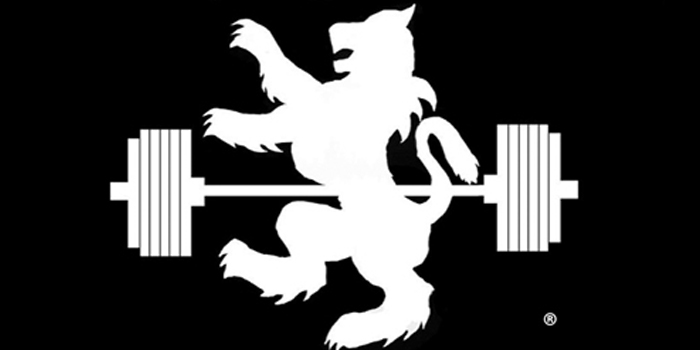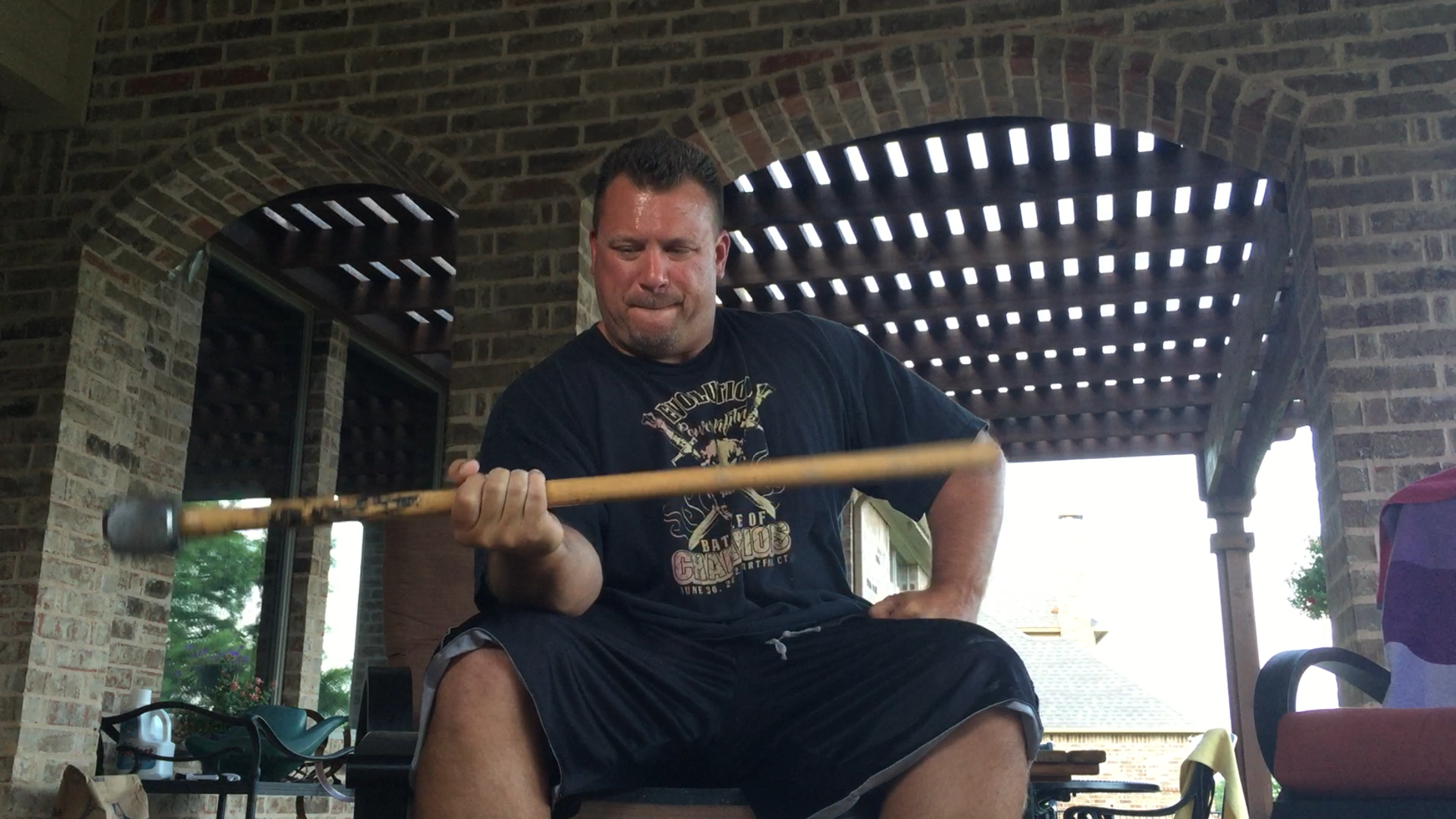
I have a sick affection for the soreness following an intense training session. In my mind, there’s something primal about it — something animal-like or warrior-like.
This is me at my most masochistic.
I’m not suggesting you have to feel sore to stimulate muscular hypertrophy and/or strength gains, but unless you have an imminent need to effectively sprint away from a pack of hungry zombies, there is something strangely satisfying when you feel your body recovering from the training. It's akin to forensic evidence the body is adapting to the imposed demands of programming. Maybe it’s because I’m getting older and running the Beast facility aged me physically in dog years, I view the soreness as evidence I’m still able to perform work.
I love when my legs are sore, especially when I’m hanging out with a crew where I know I am the only one — meaning I’m the one that’s doing the work. That said, there is something particularly satisfying about experiencing hand soreness after intense grip training. I am definitely not a grip specialist, but I’m not a novice either. Perhaps it's because your hands are such an integral part of all daily activities, the soreness is almost impossible to ignore. I’m clearly a grip masochist.
You know you've done some work.
I used to fill an old Maxwell House coffee can with ice water and soak my hands to help keep the swelling to a modest level; the poor man’s version of cryogenic therapy.
Lately, I've just been rolling with it.
Perhaps I need more focus on the pre-hab. We’ll see.
The Office
The arduous meeting mercifully ends. I stand and shake hands with one of my peers, thank him for his time, and let him know I think the project will be a success and I appreciate his cooperation. I am exceptionally affable because I know he is going to be responsible for most of the work and I need his expertise.
"Strong.” He comments as our palms connect. “Have you been working out, man?" he asks, staring in the general direction of my meaty calloused paw. As I release my grip, he pounds his own chest in some bizarre gesture of office bravado, like he’s Terry Tate: Office Linebacker.
“It feels like you’ve been training.”
I consider the questions and comments a moment before responding — really consider them. ”Not as much as I'd like," I mutter. “Mostly chins and grip work.”
Before the follow-up question arrives, I politely excuse myself and hustle back to a gloomy office where spreadsheets are anxiously strewn about my desk awaiting renewed attention.
Not as much as I'd like. No truer words were ever spoken.
I’d like to train more frequently and I know that consistency is the key to continued progress, but it’s challenging with all of the other life commitments. Attempting to maintain the work-family-training balance has required me to aggressively plan in order to carve-out the time required to accomplish work in the gym or at other venues.
Sometimes you must consider training in other venues.
Flashback One Month
I’m in the parking lot across the street from my younger son’s baseball game. It is 105 degrees in the sun and heat aggressively radiates from the cracked asphalt. I pull an old bath towel from the trunk of my car and wipe away the sweat that is further burning my red and irritated eyes. I stare with disdain (and an amalgam of respect and admiration) at the Captains of Crush #3 before tossing it on the trunk of my car. It's a barbaric strength tool, the closing of which has eluded me over the better part of the last decade.
If you’re the parent of a youth athlete, you’ll better understand the scenario I’m about to explain. However, if the incredibly time consuming process of chauffeuring your child from athletic event to athletic event has not yet bestowed itself upon you, you’re perhaps one of the lucky ones, though, as they say, the grass is always greener.
When considering “Select Sports” (aka Travel Teams), at least in the Dallas area, particularly select baseball and lacrosse (I fortuitously have experience with both), nearly all of the events involve a minimum of an hour of travel (one way) — so jot-down two hours of travel time including the return trip. In addition, the coaches request you arrive at a typical game one hour before the official start time for general warm-ups. Given that the typical baseball game lasts about two hours, each game turns into an approximately five hour commitment. Lacrosse is slightly less. It’s an enormous time investment.
Have I talked about this before? In my current state of parenthood, it’s pervasive.
The first hour before start time, when the teams are preparing for play, is completely dead time for the parents. I used to fill the time with a Starbucks excursion, lap top in tote in an attempt to nab a coffee and use the internet access to accomplish something, whether it’s cobbling together some programming, an article, or organizing some baseball college recruiting for my older son. However, on a 105 degree summer day, sometimes a hot venti pike is not the first order of the day.
Most recently I’ve been using the dead time to wedge-in some extra training — specifically grip work and forearm training. I enjoy grip training because grip strength can be an incredibly important factor in both athletics and in day-to-day life. Also, it would be hard for me to overemphasize the benefit of a strong handshake.
Most parents are eager to get to the field to discuss, with anyone willing to listen, how their child is somehow getting short-changed of well-deserved playing time or how their child it better than the current shortstop. I suspect that strikes a familiar chord with many of you. Because of the phenomenon, the parking lot adjacent to the field can actually provide some respite from those less than fruitful (albeit entertaining) conversations. I keep my training implements in the trunk of the car so they are always ready for the call to action in short notice.
From the trunk of my car, I pull a sledge hammer, a Wrist Reinforcer leverage bar (think shorter sledge hammer), weight plates (for pinch gripping), and a variety of grippers.
The Training
My training centers on three areas:
1 – Crushing Grip Training
2 – General Forearm Training
3 – Pinch Gripping (between thumb and fingers)
My programming is nothing fancy, but I do have a couple of tips I’d like to pass along.
When I train grip as a normal segment in a workout, I like to perform the exercises after a larger movement so my hands are already warm and prepared to handle the workload (e.g., a full chin-up or upper body workout prior to the grip training).
I find in my case, any strength degradation associated with pre-exhaustion from gripping the chin bar is offset by how much better prepared my hands feel to handle the workload (Hand GPP – did I invent new jargon?). While training in a parking lot, I don’t have that same luxury so I simply start by warming my hands with some simple flexes and extensions against no resistance — nothing too radical, but definitely a good habit.
I typically work my crushing strength first with the grippers (either a COC or Heavy Grips) using an easy level fist for one or two sets of five to six repetitions. After the initial sets I increase the progression to the #1 (or a Heavy Grips 150-200) for a set of five repetitions. I may do an additional set with the #1 if I feel my hands are not quite prepared for the next jumps (i.e., the #2, #2.5, and some work with the #3).
Since I’ve not officially closed the #3, these attempts are mostly max-effort-type cheats, where I may even assist in stabilizing one leg of the gripper with the thumb of the opposite hand. For my money, several sets of very low reps (one to three closes) are the name of the game here.
If you are new to grippers and grip training, I would suggest you look to YouTube to determine how to best position these beasts in your hand. There are a lot of videos available that do an excellent job in this regard. The starting position is very important and subtle changes can really impact your ability to close the implement and thereby the effectiveness of the exercise. Focus on each set and don’t get sloppy.
After the crush training, I typically perform some type of forearm work using either a sledgehammer, the Wrist Reinforcer, or both. Unlike the gripper work, training with a sledge in an active parking lot is a little more conspicuous (I recommend parking further away from the playing field and under the shade of a small tree if possible). I typically perform wrist rotations while seated in my travel chair (resting my elbow on my thighs for additional stability). Two or three sets of 10 to 12 rotations typically do the trick for a massive forearm infusion. You can also utilize various levered holds.
Lastly, pinch grips for timed hold or until complete failure (i.e., the plates fall from my hand). I’ll typically pinch two 25-pound Olympic plates with the smooth side out holding them carefully to ensure my feet are out of harm’s way. I’ll hold the plates as long as possible or until one of the park patrons phones the police or the paramedics. I typically perform these sets until I can no longer endure the pain and the plates become too hot to touch under the Texas sun, or the umpire yells “Play ball!”
Ignorance Is Bliss
"Give me about two weeks and I'll close the #3," my oldest son boasts while I steal some extra grip work in the garage during one of his training sessions. We’ve designed his programming specifically for baseball players.
“Two weeks? Seriously, two weeks? You know I’ve been working on closing this sucker for some time and I’ve yet to do it?” I demonstrate a flex of my forearm, which easily rivals that of a Silverback gorilla (an aging Silverback).
“Two weeks,” he repeated. “Closed.” He pantomimes a gripper close utilizing his south paw — with authority.
"Yeah," I said. "I'll give you fifty-thousand dollars if you can close it this year."
“Fifty-thousand?"
"Yeah, good luck with that. You should just go back to the corner and stick to your med ball throws and rice digs."
High school baseball pitchers — they don’t know much about grip training (nor do they understand the ultimate masochism that comes with being a baseball parent, or for that matter, a grip trainee).












